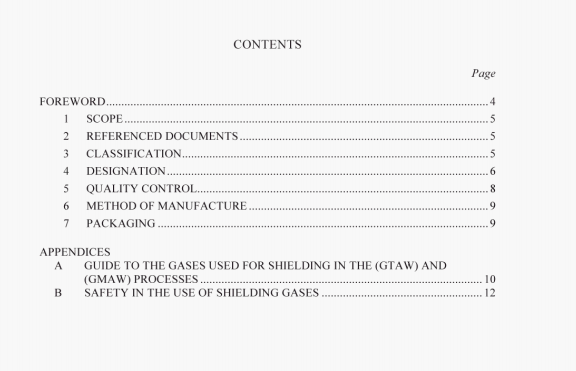AS 4882:2003 pdf – Shielding gases for welding.
5.3 Retest
If any gas fails to meet its test requirements. the test shall be repeated twice. The results of
both retests shall meet the requirement of this Standard.
If the results of one or both retests fail to meet the requirement, the gas being tested shall be considered as not meeting the requirements of this Standard for that classification.
In the event that appropriate procedures were not followed in preparing the test sample(s) or in conducting the tests, or if the equipment is found to be reading inaccurately, the test shall be considered invalid, without regard to ishether lest results met, or failed to meet, the requirement. In this case, the test may be repeated afler rectification of the equipment and/or procedure.
6 METHOD OF MAN UFACTIJRE
Shielding gases classified according to this Standard ma> be manufactured by an> method that will produce gas or gas mixtures that meet the requirements of this Standard.
The gas manufacturer shall employ such quality control and product testing to ensure that the shielding gas meets the specified composition and moisture levels.
All gas containers shall be evacuated or. if not evacuated, other suitable means taken to ensure that the gas or gas mixtures when produced meet the requirements of this Standard.
NOTE: Suitable means would be, for eNample. the use of pressure retention valves to prevent contamination of any residual gas in the cylinder or container.
7 PACKAGING
Gases and gas mixtures shall be packaged and transported in accordance with the Australian Dangerous Goods Code and AS 2030.1.
Gases used in welding are non-toxic (non-poisonous); however, they will not support life. The main danger in their use comes from welding in a confined space, such as a tank or deep pit, where they can displace the air and reduce the oxygen content.
The atmosphere contains about 21% oxygen and the safe lower limit for humans is about 19%. An individual breathing air in which the oxygen is deficient would not be capable of assessing the situation because deficiency of oxygen creates fatigue. confusion and lack of coordination. There might also be a sense of euphoria and the operator would be unaware of the danger.
Atmospheres of 12% or less will cause unconsciousness and continual exposure can cause death from asphyxiation.
It should be remembered that nearly all welding gases (pure or mixtures) are heavier than air and, in confined spaces, tend to displace air easily. Mechanical ventilation should be provided in such circumstances and the replacement air should be clean and respirable. Oxygen or oxygen-rich gases should never be used for ventilation because of the ease with which materials (e.g., clothing) will burn in such atmospheres.
AS 4882:2003 pdf – Shielding gases for welding
